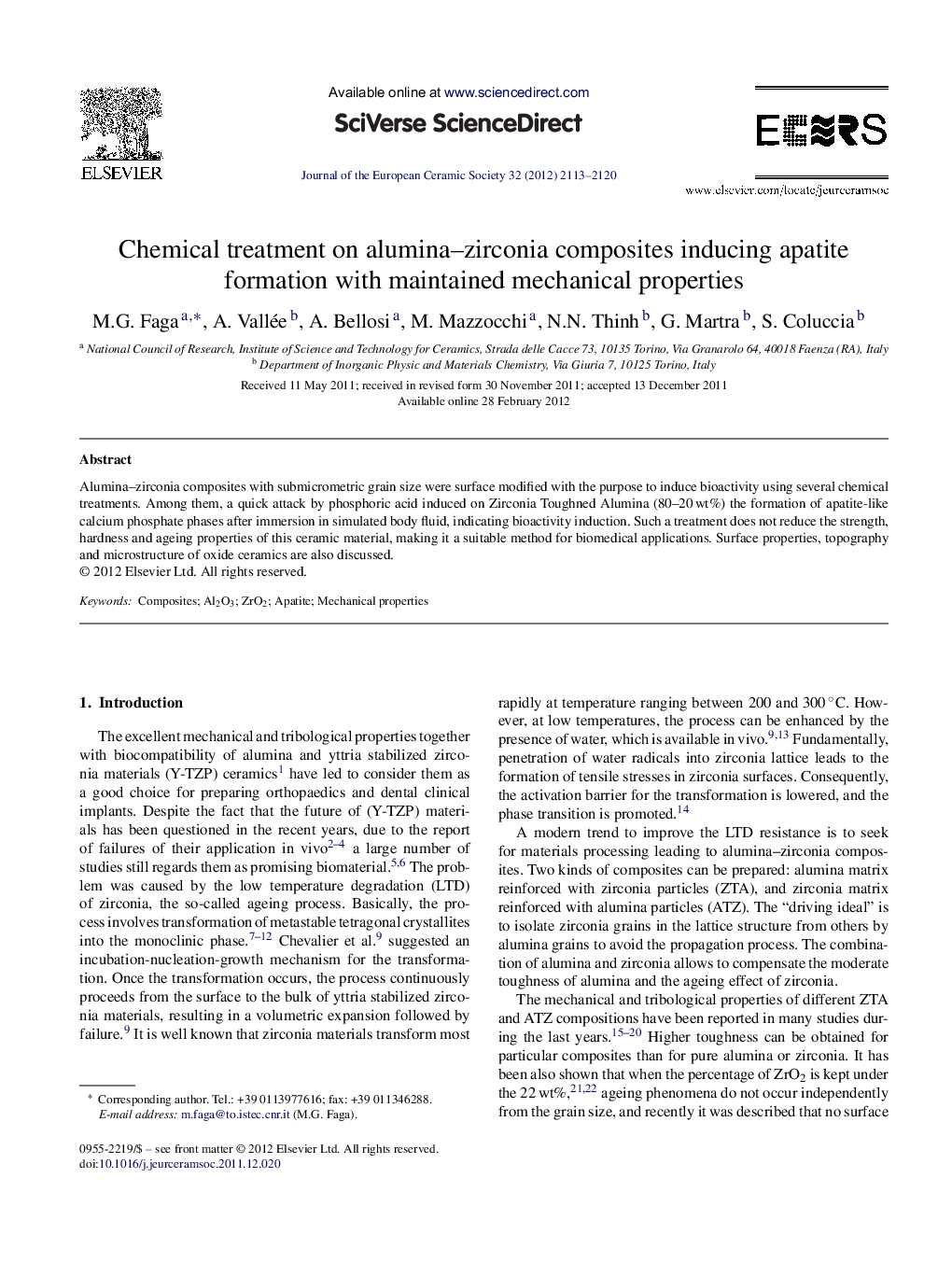| Article ID | Journal | Published Year | Pages | File Type |
|---|---|---|---|---|
| 1475283 | Journal of the European Ceramic Society | 2012 | 8 Pages |
Abstract
Alumina–zirconia composites with submicrometric grain size were surface modified with the purpose to induce bioactivity using several chemical treatments. Among them, a quick attack by phosphoric acid induced on Zirconia Toughned Alumina (80–20 wt%) the formation of apatite-like calcium phosphate phases after immersion in simulated body fluid, indicating bioactivity induction. Such a treatment does not reduce the strength, hardness and ageing properties of this ceramic material, making it a suitable method for biomedical applications. Surface properties, topography and microstructure of oxide ceramics are also discussed.
Related Topics
Physical Sciences and Engineering
Materials Science
Ceramics and Composites
Authors
M.G. Faga, A. Vallée, A. Bellosi, M. Mazzocchi, N.N. Thinh, G. Martra, S. Coluccia,
